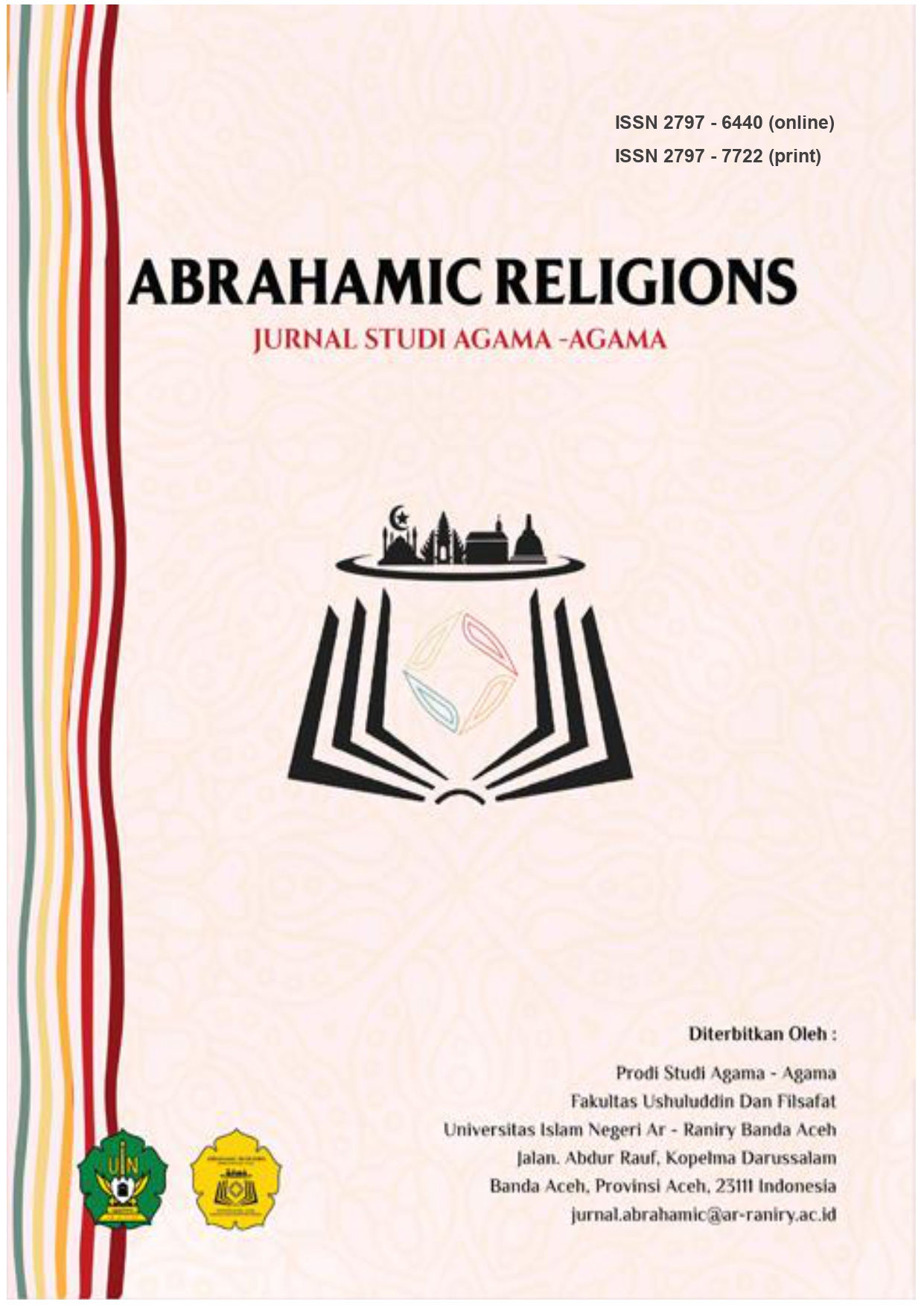MARTABAT ALAM TUJUH DALAM PERSPEKTIF SYEKH ABDUL MUHYI PAMIJAHAN
DOI:
https://doi.org/10.22373/arj.v2i1.12094Keywords:
MARTABAT, ALAM TUJUH, SYEKH ABDUL MUHYI PAMIJAHANAbstract
Sheikh Abdul Muhyi is a cleric who spreads Islam in the southern region of West Java. Born in Mataram in 1650 AD/1071 H and raised by his parents in the city of Gresik. As a propagator of Islam, he has written works that become a reference in his da'wah. One of his works is a manuscript entitled Martabat Kang Pitutu (dignity of the seven realms). Among researchers, this paper is still debatable, whether it is the original work or in the form of an adaptation of a previously existing work with a certain interpretation from it. This study seeks to find answers to what and how the teachings of the seven natural dignity of Sheikh Abdul Muhyi's perspectives are taught and why the seven natural dignity teachings are taught/what is its significance. This is done because the teachings of the seven natural dignity in the world of Sufism originated from the teachings of Sufism wahdatul form (unity of being) which was developed by Ibn Arabi. It is not clear when this teaching first entered Indonesia. What is clear is that before Sheikh Haji Abdul Muhyi, several Indonesian Sufi scholars had written this teaching, such as Hamzah Fansuri, Syamsuddin as-Sumatrani w. 1630 and Abdur Rauf Singkel w. 1615 with their respective derivations and variations. Based on the results of this study, it was found that the teachings of the dignity of the seven Sheikh Abdul Muhyi have conformity with the teachings of the dignity of the other seven. What distinguishes it is the written language and contextualization of teachings in accordance with the Indonesian spiritReferences
A.H.Johns. (1961). “Muslim mystics and historical writing” dalam Hall, Historians of South –East Asia.
Abdullah Yusuf dkk. (1987). Naskah-naskah Syekh Abdul Muhyi. Sundanologi.
Alwi Shihab. (2009). Antara Tasawuf Sunni dan Tasawuf Falsafi: Akar Tasawuf di Indonesia. Pustaka Iman.
Azyumardi Azra. (2003). Jaringan Global dan Lokal Islam Nusantara. MIzan.
Hasan Muarrif Ambari. (1998). Menemukan Peradaban Jejak Arkeologis dan Historis Islam Indonesia. Logos.
Helius Sjamsuddin. (2007). Metodologi Sejarah. Penerbit Ombak.
M. Solihin. (2001). Sejarah dan Pemikiran Tasawuf di Indonesia. Pustaka Setia.
Prasetya Irawan. (2000). Logika dan Prosedur Penelitian: Pengantar Teori dan Panduan Praktis Penelitian Sosial bagi Mahasiswa dan Peneliti Pemula. STIA-LAN Press.
rumahmakalah. (2009). Mengenal Filsafat Fenomenologi. Wordpress.Com.
Sangidu. (2002). Konsep Martabat Tujuh dalam At-Tuchfah al-Mursalah karya Syekh Muhammad Fadhlullah Al-Burhanfuri: Kajian Filologis dan Analisis Resepsi. HUMANIORA, Volume 14,.
Simuh. (1996). Sufisme Jawa: Transformasi Tasawuf Islam ke Mistik Jawa. Bentang Budaya.
Sri Mulyati. (2006). Tasawuf Nusantara: Rangkaian Mutiara Sufi Terkemuka. Pustaka Kencana.
Downloads
Published
Issue
Section
License
Authors who publish in this Journal agree to the following terms:
- Authors retain copyright and grant the journal right of first publication with the work simultaneously licensed under Attribution-ShareAlike 4.0 International (CC BY-SA 4.0) allows others to share the work with an acknowledgment of the work's authorship and initial publication in this journal.
- Authors are able to enter into separate, additional contractual arrangements for the non-exclusive distribution of the journal's published version of the work (e.g., post it to an institutional repository or publish it in a book), with an acknowledgment of its initial publication in this journal.
- Authors are permitted and encouraged to post their work online (e.g., in institutional repositories or on their website) prior to and during the submission process, as it can lead to productive exchanges, as well as earlier and greater citation of published work. (See The Effect of Open Acces)















